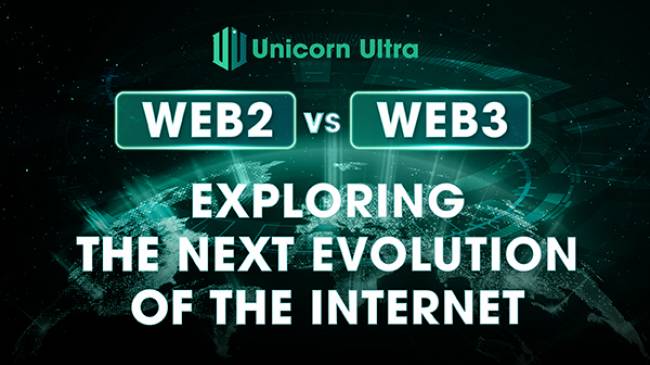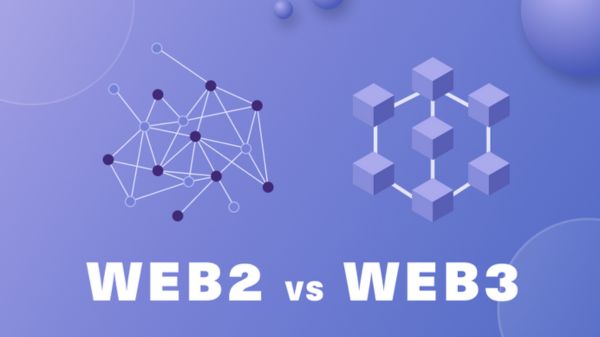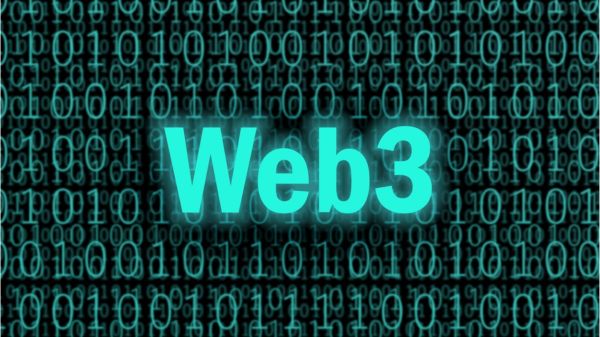Categories: General Information
Compare Web2 vs Web3 - Exploring the Next Evolution of the Internet
Explore the benefits of decentralization, user empowerment, and trustless systems in this comparison of Web2 vs Web3. Discover the key differences between Web2 and Web3 and how they shape the future of the Internet.
The Internet has undergone significant transformations, from the early days of static websites to today's dynamic and interconnected platforms. The latest evolution, often referred to as Web3, represents a paradigm shift in how we interact with digital technologies. In this blog post, we will delve into the fundamental differences between Web2 vs Web3, providing a comprehensive comparison of these two distinct paradigms. By exploring the key principles and features of Web2 vs Web3, we aim to shed light on the exciting possibilities and implications of the decentralized web for the future of online interactions and applications.
Table of Contents
What is Web2?

Web 2.0 encompasses the present condition of the internet, characterized by a greater abundance of user-generated content and enhanced usability for end-users when compared to its predecessor, Web 1.0. Broadly speaking, the term Web 2.0 signifies the Internet applications of the 21st century that have revolutionized the digital landscape following the burst of the dotcom bubble. This transition has ushered in a new era, empowering individuals to actively contribute to the online realm and profoundly shaping the way we interact with the online world.
Web2, or the second generation of the web, has shaped the digital landscape for the past two decades. It is characterized by centralized platforms where users depend on intermediaries for various services, such as social networking, e-commerce, and content sharing. Web2 platforms collect vast amounts of user data, monetizing it through targeted advertising and creating digital monopolies.
In a Web2 environment, users lack control and ownership over their data. They are subject to platform rules and terms of service, often sacrificing privacy and security for convenience. Moreover, Web2 platforms are vulnerable to censorship, data breaches, and manipulation, as the power lies in the hands of a few centralized entities.
What is Web3?
Web3, also known as the decentralized web, is an emerging concept that seeks to address the limitations of Web2. It leverages blockchain technology, cryptography, and decentralized networks to empower users and create a more open, transparent, and user-centric Internet ecosystem.
One of the key principles of Web3 is decentralization. Instead of relying on a single point of control, Web3 platforms are built on decentralized networks, where data and operations are distributed across multiple nodes. This distributed architecture enhances security, resilience, and censorship resistance, as there is no central authority that can manipulate or control the network.
Ownership and control over data are fundamental aspects of Web3. Through technologies like self-sovereign identity and decentralized storage, users have the ability to manage their own data, granting or revoking access as they see fit. This shift puts users in control of their online identities and eliminates the need for intermediaries to store and manage personal information.
Web3 also introduces the concept of smart contracts, programmable self-executing agreements that run on blockchain platforms. Smart contracts enable trustless interactions, automating processes and removing the need for intermediaries in various sectors, such as finance, supply chain, and governance. This technology facilitates transparency, efficiency, and eliminates the potential for human error or fraud.

Differences and Similarities of Web2 vs Web3
Web2 and Web3 refer to different stages of the internet's evolution and have distinct characteristics:
Web2:
- Web2, also known as the second generation of the internet, represents the current state of the internet as we know it today.
- It is characterized by centralized platforms and services where data is stored on servers owned and controlled by companies or organizations.
- Web2 applications rely on user-generated content, and users primarily act as consumers of content and services.
- Examples of Web2 services include social media platforms like Facebook, Twitter, and Instagram, as well as various centralized web applications.
Web3:
- Web3, also known as the third generation of the internet, represents a vision of a more decentralized and user-centric internet.
- It is characterized by the use of blockchain technology, which enables the creation of decentralized applications (dApps) and smart contracts.
- Web3 aims to give users more control over their data and digital identities, shifting from being mere consumers to active participants and owners of their information.
- It seeks to eliminate the need for intermediaries and central authorities, promoting trust and transparency through blockchain's consensus mechanisms.
- Examples of Web3 applications include decentralized finance (DeFi) platforms, non-fungible tokens (NFTs) marketplaces, and various blockchain-based projects.
In summary, Web2 represents the current centralized state of the internet, while Web3 envisions a more decentralized and user-empowered internet built on blockchain technology. Web3 strives to address some of the limitations and concerns of Web2 and aims to create a more open and inclusive online ecosystem.
The Potential of Web3
Web3 holds immense potential for transforming various industries and redefining the internet as we know it. Here are some key areas where Web3 is making an impact:
Decentralized Finance (DeFi): Web3 enables the creation of decentralized financial systems, offering open and accessible financial services to anyone with an internet connection. DeFi protocols provide opportunities for borrowing, lending, trading, and earning interest without relying on traditional intermediaries like banks.
Digital Identity: Web3 allows individuals to have complete control over their digital identities. Self-sovereign identity solutions enable secure and portable identities that can be used across different platforms without the need for centralized identity providers.
NFTs and Digital Ownership: Non-Fungible Tokens (NFTs) represent unique digital assets that can be bought, sold, and owned by individuals. Web3 platforms have revolutionized the concept of digital ownership, enabling creators and collectors to authenticate, trade, and monetize digital assets in a transparent and secure manner.

Decentralized Social Networking: Web3 offers alternatives to traditional social media platforms by creating decentralized social networks. These networks prioritize user privacy, data ownership, and allow users to have greater control over the content they share and the interactions they have.
Benefits of Web3
User Empowerment: Web3 puts users back in control of their digital lives. Through self-sovereign identities and ownership of assets, users can transact and engage in online activities with greater autonomy and security.
Transparency and Trust: The transparent nature of blockchain technology instills trust in Web3 applications. Immutable records and smart contracts ensure that transactions and interactions are transparent and tamper-proof.
Economic Opportunities: Web3 unlocks new economic models through decentralized finance (DeFi) and tokenization. It enables peer-to-peer lending, yield farming, and other innovative financial services, creating opportunities for financial inclusion and wealth generation.
Innovation and Collaboration: Web3 fosters innovation by providing a fertile ground for developers to build decentralized applications. The interoperability of Web3 platforms encourages collaboration and the sharing of ideas, driving collective progress.

Web3 limitations
Currently, there are several drawbacks associated with Web3:
Scalability: Web3 transactions tend to be slower due to their decentralized nature. Any modifications to the system's state, such as processing payments, necessitate the involvement of a node and subsequent dissemination throughout the network.
User Experience (UX): Engaging with Web3 applications often demands additional steps, additional software, and additional education. This can pose a barrier to widespread adoption.
Accessibility: Web3's limited integration within modern web browsers makes it less accessible to the majority of users.
Cost: To mitigate expenses, most successful decentralized applications (dApps) store only minimal portions of their code on the blockchain.
Conclusion
In the ongoing battle between Web2 vs Web3, we are witnessing a significant transformation in the landscape of the Internet. Web2, characterized by its centralized structure, has revolutionized connectivity and digital experiences. However, the rise of Web3 brings forth a new era of decentralization, user empowerment, and trustless systems. When comparing Web2 vs Web3, it becomes clear that Web3 offers individuals greater control over their data, identities, and digital assets. By harnessing the power of blockchain technology and smart contracts, Web3 enables secure and transparent interactions, eliminating the need for intermediaries.
While challenges like scalability and mainstream adoption persist, Web3 fuels innovation in finance, digital ownership, and social networking. Embracing the principles of decentralization and user-centricity, we have the opportunity to shape a more equitable and transparent digital future.
As the rivalry between Web2 vs Web3 intensifies, it sets the stage for a transformative shift in how we connect, create, and collaborate online.
Follow https://uniultra.xyz/ for more blockchain updates.
